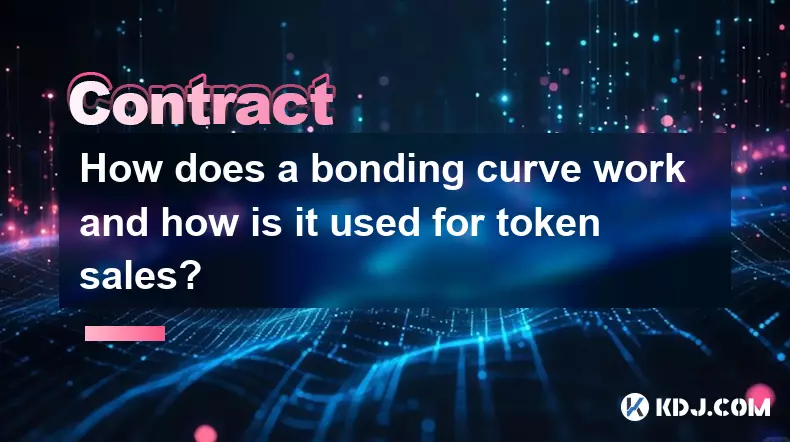-
 bitcoin
bitcoin $106680.127705 USD
0.67% -
 ethereum
ethereum $3615.722480 USD
-0.65% -
 tether
tether $0.999925 USD
-0.04% -
 xrp
xrp $2.550072 USD
5.91% -
 bnb
bnb $1002.572269 USD
-0.90% -
 solana
solana $168.746669 USD
1.08% -
 usd-coin
usd-coin $0.999832 USD
-0.03% -
 tron
tron $0.297244 USD
1.97% -
 dogecoin
dogecoin $0.182965 USD
0.71% -
 cardano
cardano $0.600432 USD
2.56% -
 hyperliquid
hyperliquid $41.439691 USD
-1.57% -
 chainlink
chainlink $16.548399 USD
2.40% -
 bitcoin-cash
bitcoin-cash $524.993680 USD
3.45% -
 stellar
stellar $0.302259 USD
4.10% -
 zcash
zcash $539.994871 USD
-16.31%
Coinbase leverage tutorial
Understanding the complexities of leverage trading on Coinbase empowers experienced traders to capitalize on enhanced profit potential while managing substantial risks.
Nov 09, 2024 at 11:32 am

Coinbase Leverage Tutorial: A Comprehensive Guide to Trading with Leverage on Coinbase
Coinbase, one of the most reputable cryptocurrency exchanges globally, provides a powerful feature for experienced traders: leverage trading. Understanding how to leverage trade can significantly enhance your profit potential but also carry substantial risks. This comprehensive tutorial will delve into the intricacies of leverage trading on Coinbase, empowering you to make informed decisions and maximize your trading outcomes.
What is Leverage Trading?Leverage trading involves borrowing funds from an exchange to amplify your trading position. This allows you to trade with a larger amount of funds than you currently possess. For instance, if you have $1,000 in your Coinbase account and utilize 10x leverage, you could trade with $10,000.
Why Use Leverage on Coinbase?Leverage trading offers several advantages, including:
- Increased profit potential: Amplifying your trading position can lead to substantial profits if the market moves in your favor.
- Enhanced diversification: With leverage, you can allocate a smaller amount of capital to various trades, diversifying your portfolio and reducing your risk.
- Hedging: Leverage can be used to hedge your existing positions, reducing your exposure to potential losses.
While leverage can enhance your profits, it also carries significant risks:
- Amplified losses: If the market moves against you, your losses will be amplified in proportion to the leverage used.
- Margin call: If your losses exceed your account equity, Coinbase may issue a margin call, forcing you to deposit additional funds or liquidate your position.
- Liquidation: If you fail to meet a margin call, Coinbase may liquidate your position, potentially resulting in substantial losses.
To activate leverage trading on Coinbase, follow these steps:
- Enable Leverage Trading: Access your Coinbase account and navigate to the settings. Locate the "Leverage Trading" option and click "Enable."
- Verify Your Account: Coinbase requires identity verification to enable leverage trading. Complete the necessary steps to verify your identity.
- Understand the Risk: Before using leverage, it's crucial to thoroughly understand the risks involved. Coinbase provides educational resources and a risk disclosure agreement. Take the time to review these materials.
- Choose a Leverage Level: Determine the appropriate leverage level for your trading strategy and risk tolerance. Coinbase offers leverage options ranging from 2x to 10x.
- Open a Margin Trading Account: Create a separate margin trading account to isolate your leverage trades from your regular trading operations.
- Trade with Leverage: Once your margin trading account is funded, you can execute trades with leverage. Pay close attention to your position size and risk management strategies.
- Suppose you have $1,000 in your Coinbase account and want to trade ETH with 5x leverage.
- Activate leverage trading and create a margin trading account.
- You now have access to $5,000 in your margin trading account ($1,000 x 5x leverage).
- You decide to buy $5,000 worth of ETH, effectively using $1,000 of your own funds and borrowing $4,000 from Coinbase.
- If ETH rises by 10%, your profit would be amplified by 5x, resulting in a $500 profit ($5,000 x 0.1 x 5).
- However, if ETH drops by 10%, your loss would also be amplified by 5x, resulting in a $500 loss ($5,000 x 0.1 x 5).
- Use stop-loss orders: Automatically close your position if the price moves against you to a predetermined level, limiting your losses.
- Monitor your margin: Keep a close eye on your account equity and the margin requirement for your open positions. If your margin drops below a certain level, you may receive a margin call.
- Avoid trading with excessive leverage: Using excessive leverage can significantly increase your risk of liquidation. Choose a leverage level that aligns with your trading experience and risk tolerance.
- Understand the potential impact of fees: Coinbase charges interest on borrowed funds, which can impact your profitability.
Disclaimer:info@kdj.com
The information provided is not trading advice. kdj.com does not assume any responsibility for any investments made based on the information provided in this article. Cryptocurrencies are highly volatile and it is highly recommended that you invest with caution after thorough research!
If you believe that the content used on this website infringes your copyright, please contact us immediately (info@kdj.com) and we will delete it promptly.
- CFTC, Crypto, and Congress: Navigating the Murky Waters of Market Oversight
- 2025-11-11 10:55:01
- XRP: Is This Crypto's Best-Performing Asset?
- 2025-11-11 06:45:01
- Navigating the Crypto Maze: Economic Schedules, Treasury Auctions, and the Bitcoin Beacon
- 2025-11-11 07:40:01
- BitMine, ETH, and Assets: Navigating the Crypto Landscape Like a New Yorker
- 2025-11-11 13:00:02
- Exodus & Grateful: Stablecoin Payments Take Center Stage
- 2025-11-11 10:10:01
- AVAX & OP: Price Prediction, Open Interest, and Recovery Gains - What's Next?
- 2025-11-11 06:50:02
Related knowledge

What is a Denial of Service (DoS) attack in a smart contract and what are its common forms?
Nov 10,2025 at 05:20am
Understanding Denial of Service in Smart Contracts1. A Denial of Service (DoS) attack in the context of smart contracts refers to a scenario where a m...

What is a cryptographic nonce used for in transaction signing?
Nov 11,2025 at 05:59am
Understanding Cryptographic Nonces in Blockchain Transactions1. A cryptographic nonce is a random or pseudo-random number used only once in the contex...

How do you safely send Ether to another contract?
Nov 09,2025 at 06:40pm
Sending Ether to Smart Contracts: Key Considerations1. Verify that the receiving contract has a payable fallback function or a designated payable func...

What is the role of a block timestamp and what are its limitations for security?
Nov 11,2025 at 02:19am
Understanding the Role of Block Timestamps in Blockchain Networks1. A block timestamp serves as a chronological marker indicating when a particular bl...

What is a state machine and how can a contract be designed as one?
Nov 08,2025 at 02:19pm
Understanding State Machines in Blockchain Context1. A state machine is a computational model used to design systems that transition between defined s...

How does a bonding curve work and how is it used for token sales?
Nov 09,2025 at 04:00pm
Understanding the Mechanics of Bonding Curves1. A bonding curve is a mathematical function that links the price of a token to its supply. As more toke...

What is a Denial of Service (DoS) attack in a smart contract and what are its common forms?
Nov 10,2025 at 05:20am
Understanding Denial of Service in Smart Contracts1. A Denial of Service (DoS) attack in the context of smart contracts refers to a scenario where a m...

What is a cryptographic nonce used for in transaction signing?
Nov 11,2025 at 05:59am
Understanding Cryptographic Nonces in Blockchain Transactions1. A cryptographic nonce is a random or pseudo-random number used only once in the contex...

How do you safely send Ether to another contract?
Nov 09,2025 at 06:40pm
Sending Ether to Smart Contracts: Key Considerations1. Verify that the receiving contract has a payable fallback function or a designated payable func...

What is the role of a block timestamp and what are its limitations for security?
Nov 11,2025 at 02:19am
Understanding the Role of Block Timestamps in Blockchain Networks1. A block timestamp serves as a chronological marker indicating when a particular bl...

What is a state machine and how can a contract be designed as one?
Nov 08,2025 at 02:19pm
Understanding State Machines in Blockchain Context1. A state machine is a computational model used to design systems that transition between defined s...

How does a bonding curve work and how is it used for token sales?
Nov 09,2025 at 04:00pm
Understanding the Mechanics of Bonding Curves1. A bonding curve is a mathematical function that links the price of a token to its supply. As more toke...
See all articles










































































